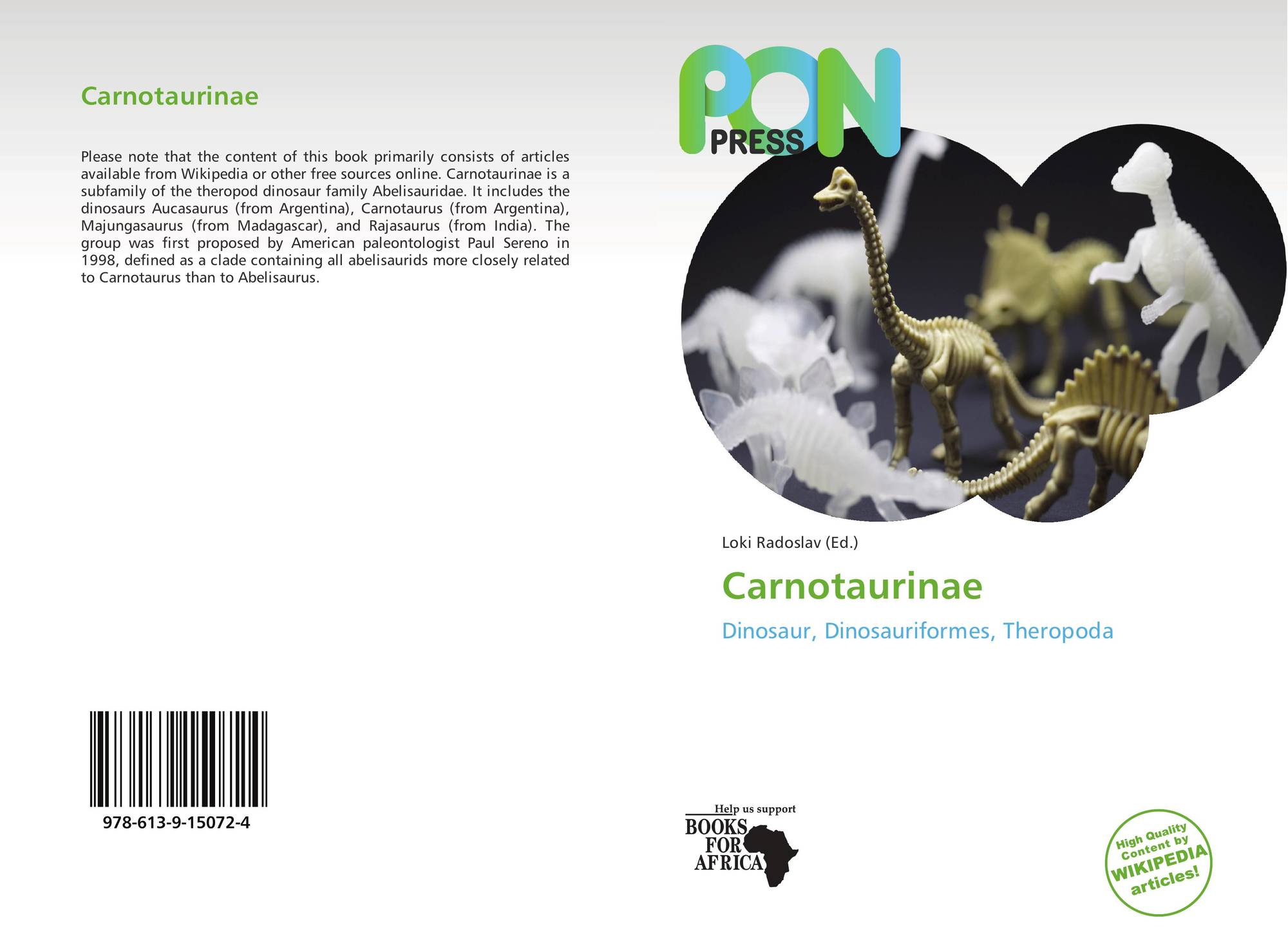Carnotaurinae
Skeleton cast of Carnotaurus in Chlupáč Museum in Prague.
- South America ( Argentina)
- Madagascar
- India
The Carnotaurinae are a subfamily of Abelisauridae within the theropod dinosaurs. It summarizes the derived ( advanced ) Representatives of Abelisauridae as Carnotaurus, Aucasaurus, Majungasaurus and Rajasaurus. Representatives of Carnotaurinae come from the Upper Cretaceous ( Cenomanian to Maastrichtian ) of Madagascar, India and Argentina.
- 4.1 Literature
- 4.2 Notes and references
Definition and Scope
The Carnotaurinae was proposed by the American paleontologist Paul Sereno first time in 1998. It is defined as a clade that includes all taxa that are more closely related to Carnotaurus than Abelisaurus. Since Abelisaurus is considered in most analyzes as the initial ( basal ) Abelisauridae that Carnotaurinae take all derived Abelisauridae together.
The taxon Carnotaurinae is not accepted by all researchers. So come Carrano and Sampson (2008) different from other studies concluded that it is in fact a derived representative of Abelisauridae at Abelisaurus. After this analysis, the Carnotaurinae, the definition would be the following, only include the genera Carnotaurus and Ilokelesia.
Features
From various representatives of Carnotaurinae horn-like structures on the skull are known. While Carnotaurus a pair of almost 15 cm long, from the frontal bone ( frontal ) has outgoing horns, Majungasaurus shows a single projection on the frontal bone. Skorpiovenator and Ekrixinatosaurus only show an increased post- orbital region. Paul Sereno and colleagues ( 2004) suggest that horn-like structures, an apomorphy ( newly acquired characteristic) represent the Carnotaurinae. Canale and colleagues ( 2009) disagree, however, and suggest that this feature is not homologous but several times independently ( convergent ) developed. They argue that differ horn-like structures in various genres in terms of their position and are made from different bones.
Inside systematics
The relationships within the Carnotaurinae are controversial. With the Carnotaurini and Brachyrostra two sub-groups were set up, but these are not universally accepted.
Carnotaurini
The Carnotaurini have been proposed by researchers to Rodolfo Coria (2002) as a new group within the Carnotaurinae. It is defined as a node point-based taxon (node based definition) that the last common ancestor of Carnotaurus sastrei and Aucasaurus garridoi and includes all descendants of that ancestor. The researchers conclude that Aucasaurus is the sister genus of Carnotaurus; thus the Carnotaurini include only these two genera. Paul Sereno (2005) does not recognize this group as the systematic position of Aucasaurus and therefore the content of this group is unclear.
Brachyrostra
Juan Canale and colleagues ( 2009) propose a new group within the Carnotaurinae ago, the Brachyrostra (Greek brachy - "short" Latin rostrum - " snout "). This group aims to summarize all Carnotaurinen which have a proportionally short snout, a heavily ornamented skull and reduced eye sockets. Canale and colleagues arrange the Brachyrostra the genera Carnotaurus, Aucasaurus, Ilokelesia, Ekrixinatosaurus and Skorpiovenator to. The genus Majungasaurus which has a proportionally longer snout, forms the sister group. The Brachyrostra are defined as the clade that includes all taxa that are more closely related to Carnotaurus sastrei than Majungasaurus crenatissimus.
Below is a cladogram to Canale and colleagues ( 2009):
Majungasaurus
Carnotaurus
Aucasaurus
Ilokelesia
Skorpiovenator
Ekrixinatosaurus










